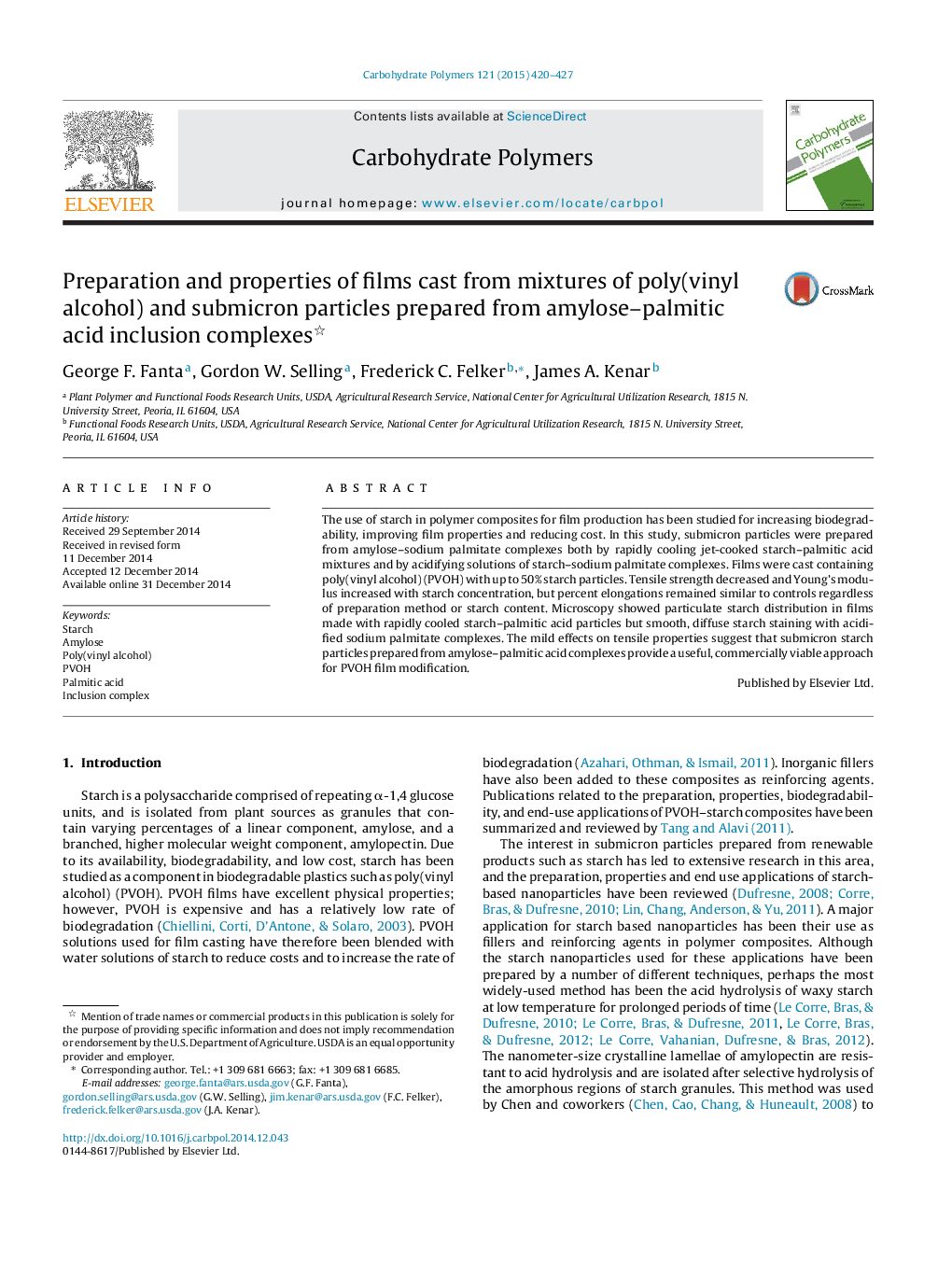| کد مقاله | کد نشریه | سال انتشار | مقاله انگلیسی | نسخه تمام متن |
|---|---|---|---|---|
| 1383282 | 1500637 | 2015 | 8 صفحه PDF | دانلود رایگان |
• Nanoparticles were obtained from amylose–palmitic acid complexes by steam jet cooking.
• Smaller nanoparticles were obtained by acidifying amylose–sodium palmitate complexes.
• Films were prepared from PVOH mixtures containing up to 50% starch nanoparticles.
• Percent elongation was not significantly reduced up to 50% starch loading.
• Film toughness was not reduced up to 30% starch loading.
The use of starch in polymer composites for film production has been studied for increasing biodegradability, improving film properties and reducing cost. In this study, submicron particles were prepared from amylose–sodium palmitate complexes both by rapidly cooling jet-cooked starch–palmitic acid mixtures and by acidifying solutions of starch–sodium palmitate complexes. Films were cast containing poly(vinyl alcohol) (PVOH) with up to 50% starch particles. Tensile strength decreased and Young's modulus increased with starch concentration, but percent elongations remained similar to controls regardless of preparation method or starch content. Microscopy showed particulate starch distribution in films made with rapidly cooled starch–palmitic acid particles but smooth, diffuse starch staining with acidified sodium palmitate complexes. The mild effects on tensile properties suggest that submicron starch particles prepared from amylose–palmitic acid complexes provide a useful, commercially viable approach for PVOH film modification.
Journal: Carbohydrate Polymers - Volume 121, 5 May 2015, Pages 420–427
